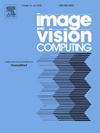AI-based intelligent hybrid framework (BO-DenseXGB) for multi- classification of brain tumor using MRI
IF 4.2
3区 计算机科学
Q2 COMPUTER SCIENCE, ARTIFICIAL INTELLIGENCE
引用次数: 0
Abstract
A brain tumor is one of the most deadly tumors in the world and can affect both adults and children. According to its shape, severity, or region affected, it comes in different types or grades. The precise treatment strategy necessitates the early detection and classification of the correct type and grade of the tumor. Magnetic Resonance imaging (MRI) is the most extensively used medical imaging technique for examining tumors. The manual examination in clinical practices is constrained by the huge amount of data generated by MRI, which makes tumor classification challenging and time-consuming. Hence, automated methods are the need of the hour for precise and timely diagnosis. This paper proposes Artificial Intelligence (AI) based automated framework to classify tumors into meningioma, glioma, and pituitary classes. The proposed framework exploits the hierarchical feature learning capabilities of the Convolutional Neural Network (CNN) in combination with an optimized boosting classifier. Hyper-parameters of the boosting classifier are tuned with Bayesian Optimization. An overall accuracy of 99.02% is obtained during the experimental evaluation of the proposed model using the benchmark Figshare dataset, which comprises 3064 MRI images. The experimental outcomes confirm that the proposed deep learning strategy outperforms the existing approaches in a convincing manner.
求助全文
约1分钟内获得全文
求助全文
来源期刊

Image and Vision Computing
工程技术-工程:电子与电气
CiteScore
8.50
自引率
8.50%
发文量
143
审稿时长
7.8 months
期刊介绍:
Image and Vision Computing has as a primary aim the provision of an effective medium of interchange for the results of high quality theoretical and applied research fundamental to all aspects of image interpretation and computer vision. The journal publishes work that proposes new image interpretation and computer vision methodology or addresses the application of such methods to real world scenes. It seeks to strengthen a deeper understanding in the discipline by encouraging the quantitative comparison and performance evaluation of the proposed methodology. The coverage includes: image interpretation, scene modelling, object recognition and tracking, shape analysis, monitoring and surveillance, active vision and robotic systems, SLAM, biologically-inspired computer vision, motion analysis, stereo vision, document image understanding, character and handwritten text recognition, face and gesture recognition, biometrics, vision-based human-computer interaction, human activity and behavior understanding, data fusion from multiple sensor inputs, image databases.
 求助内容:
求助内容: 应助结果提醒方式:
应助结果提醒方式:


